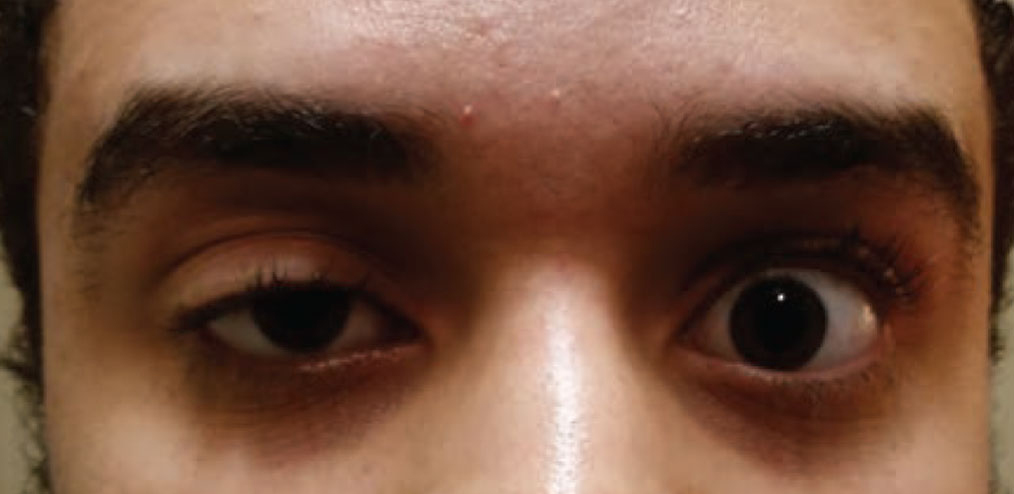 |
| Researchers recommend screening patients with diabetes and/or diabetic retinopathy for ptosis, as they may be at increased risk. Photo: Paul Ajamian, OD. Click image to enlarge. |
Optometrists must be vigilant when examining patients with diabetes mellitus to monitor for signs of the various ocular complications that can occur from the disease, including diabetic retinopathy (DR), the most common cause of vision loss in this patient population. A recent study in Taiwan found that patients with DR also had a greater risk of developing ptosis, demonstrating a need for ODs to screen for this comorbidity in patients with diabetes or DR.
To investigate ptosis risk in individuals with DR, researchers performed a large population-based, 13-year retrospective cohort study using data from the Taiwan National Health Insurance Research Database. The study included follow-up data from 9,494 patients with DR and 37,976 matched controls without DR from 2000 to 2012.
The results revealed that DR patients had a significantly increased risk of developing ptosis (adjusted hazard ratio, HR: 2.76) when compared to the control cohort. Further analysis showed that among DR patients, adults and non-smokers had a greater risk for ptosis development. Additionally, the researchers noted that DR patients showed an increased risk of developing ptosis vs. matched controls regardless of whether they had medical comorbidities of lipid metabolism disorders or hypertension.
| For more on ptosis, see this feature. |
While this study has several strengths, including its large sample size, it also has its limitations; for one, the study population was entirely ethnic Asian Taiwanese, so it’s unknown whether these findings will translate to other nationalities. The authors also pointed out in their paper, “Patients of Asian ethnicity have been shown to be more predisposed to diabetic complications than compared to their Caucasian counterparts. How this translates towards actual risk of developing ptosis among DR patients is still unknown.” Another limitation is that patients with underlying neurological conditions were not excluded; this could have influenced the results, “as ptosis frequently manifests in association with other neurological disorders such as stroke,” the authors explained.
Speaking on all of their observations, the study authors wrote in their paper, “This has implications towards the care of diabetic patients; complications such as ptosis should be properly screened for when encountering such patients.” They also recommended, “Before ptosis surgery, the possibility of underlying diabetes or DR should be scrutinized and treated properly to avoid undesirable postoperative dissension.”
Lin CJ, Hsu AY, Tien PT, et al. Diabetic retinopathy as a potential risk factor for ptosis: a 13-year nationwide population-based cohort study in Taiwan. Front Epidemiol. March 13, 2024. [Epub ahead of print]. |


